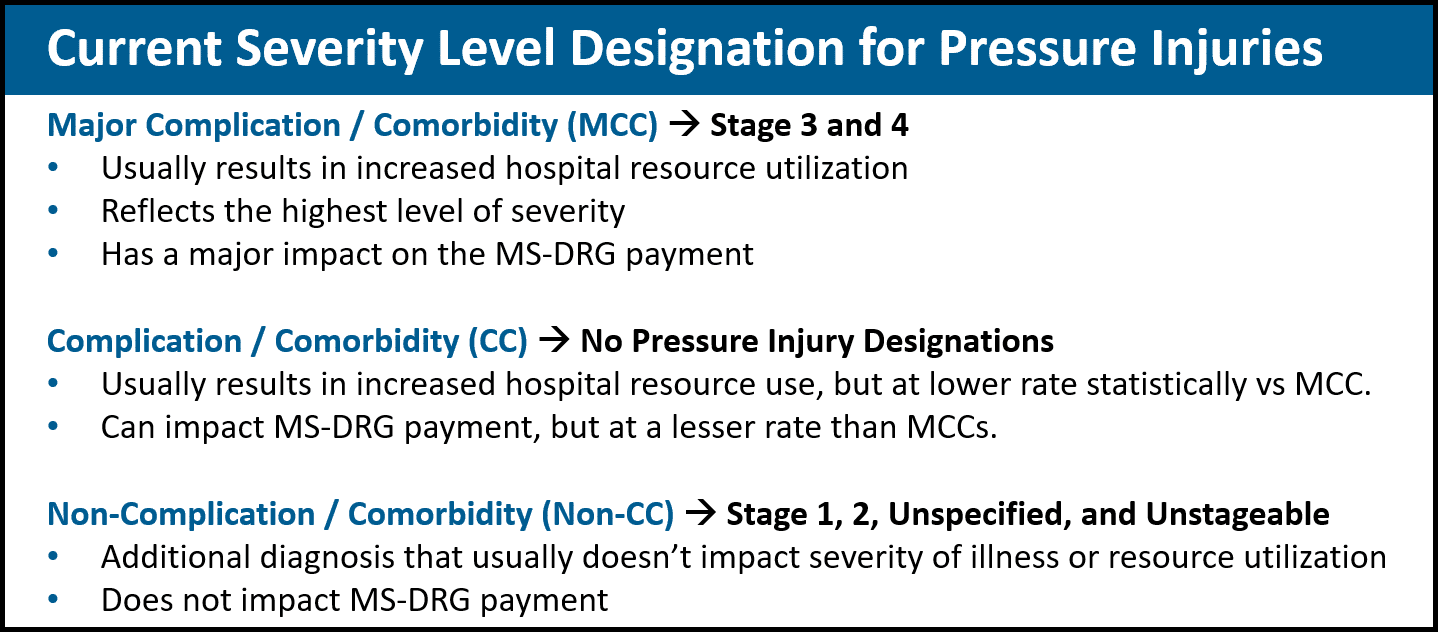With the release of IPPS FY2020, the big news is what’s NOT taking effect…
Every year, CMS releases updates and changes to the Medicare-Severity Diagnostic Related Groups (MS-DRGs) and the complication/comorbidity and major complication comorbidity (CC/MCC) diagnosis lists. This year, there were proposed rules that would have made a sweeping change to the way in which pressure injuries impact MS-DRG payments. After review of the comments made by the industry, CMS decided against making a significant change.
It’s unknown whether CMS will revisit this in FY2021, but it’s worth paying close attention to next year. Below is a quick overview of the proposed changes.
What Isn’t Taking Effect?
- The proposed rule would have changed the CC/MCC severity level designation of ALL Pressure Injury stages to CC.
- Check out the figure of current severity level designations to make sense of it all.

What was the Rationale?
According to CMS:
- A pressure ulcer at any stage requires care and preventive measures that make additional contributions to the overall cost of care
- The fact that the ulcer developed in the first place is more important than the stage of the ulcer itself in determining the impact on the costs of hospitalization
- The presence of a pressure ulcer may indicate an increase in resource use, but that increase is similar regardless of the stage of the ulcer.
Why’s it Matter to You?
If the proposed rule were to be finalized it would:
- Lower payments for Stage 3 and 4 pressure injuries
- Increase payment for all other stages (no paid currently)
- Make ALL pressure injury stages subject to the HAC-POA payment provision (e.g. all pressure injuries not documented POA would result in a HAPI, not just Stage 3 and 4)
What Does it Mean Moving Forward?
- Although the proposed rule wasn’t finalized, it sheds light on current thought process at CMS.
- For better or worse, the regulatory landscape is always changing and providers need to be ready to adapt.
- Regardless of regulations, a collaborative effort from all hospital stakeholders is necessary for optimal pressure injury prevention and proper documentation.
Have questions or need some help? Drop us a line.
